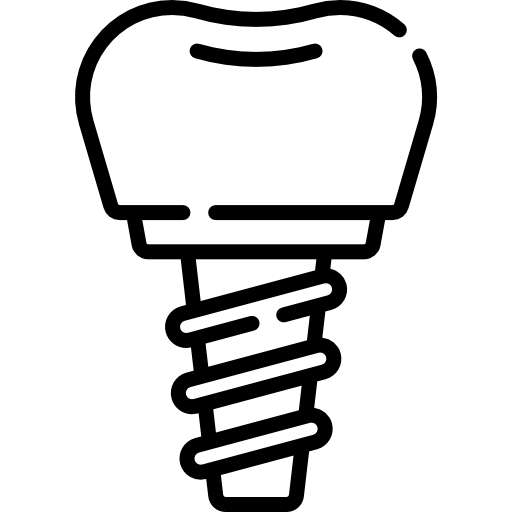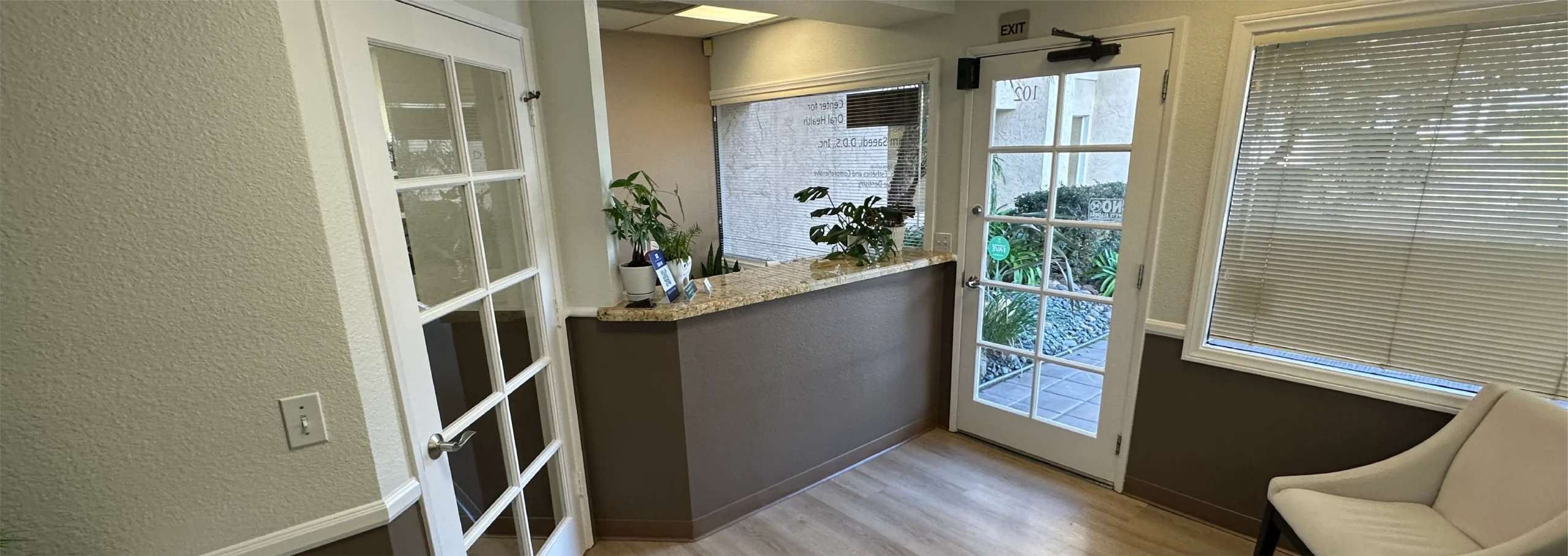Welcome To Center for Oral Health
Smile Forever
Smile With COH
Welcome to the Center for Oral Health, where we provide exceptional dental care, promote oral wellness, and deliver personalized treatments to ensure healthy, confident smiles for all ages
Opening Hours
Monday - Thursday
8.00 AM - 05.00 PM
Friday
9.00 AM - 02. 00 PM
Saturday - Sunday
(Close)
Book an Appointment
Schedule your appointment now for personalized service and expert care!
Services
What We Offer
We offer expert solutions, personalized services, high-quality products, and unmatched customer support for all needs

Exams & Cleanings
Comprehensive exams and professional cleanings for optimal dental health and hygiene


Implants
Durable, natural-looking dental implants for restoring function and enhancing smiles

Sleep Apnea Treatment

Emergency Dentistry

Exams and Cleanings
Why Choose Us
Caring for all your family’s dental needs.
Comprehensive dental care for all ages, ensuring healthy, beautiful smiles for your entire family.


Patient-Centric
When you walk through our doors, your needs come first! If there's anything we can do for you, just ask!
Comprehensive Services
We offer a comprehensive array of treatment options, including general and cosmetic dentistry.
Experienced Doctor
For years, Dr. Saeedi has been providing patients in the San Diego area with high-quality care.
Advanced Technology
The Center for Oral Health incorporates world-class equipment and techniques for our patients.
About Our Doctor
Center for Oral Health & Sleep Apnea Treatment - Your Dentist in Rancho Bernardo
Dr. Nasim Saeedi, the best dentist in Rancho Bernardo, would like to welcome you to our dentist’s office! When you visit the Center for Oral Health & Sleep Apnea Treatment in Rancho Bernardo, your smile is our top priority.
Our dental team is dedicated to providing you with the personalized, gentle care you deserve. Part of our commitment to serving our patients includes providing information that helps them make more informed decisions about their oral health needs.
Looking for a trusted family dentist near you?
Dr. Nasim Saeedi offers gentle, affordable dental care for patients of all ages — from kids to seniors. Whether it’s a routine cleaning or your child’s first visit, we’re here to keep your family smiling.
This website is a resource we hope you’ll find both useful and interesting.
Dr. Nasim Saeedi - Rancho Bernardo’s Smile Expert
Blogs
What Do Dentists Use to Whiten Teeth?
Many people have heard about teeth whitening kits available over-the-counter for use at home, but few are aware that dentists also offer teeth whitening services. Teeth whitening helps whiten and brighten teeth, even removing stains and discoloration from foods and beverages, medications, injuries, et cetera. Teeth whitening is immensely popular, and so are the number of scams out in the market.
Dentists are optimal professionals if you want to have your teeth whitened because they know which products are most effective for you and the ones to avoid. Therefore which teeth whitening products do dentists favor, and how can they help you overcome the stains or discoloration on your teeth? This article looks at how dentists whiten your teeth using products that deliver effective results instantly without harming your teeth or soft tissues.
The Importance of Whitish Teeth
Discolored teeth inhibit you from smiling to make you appear like an introvert. When you have discolored teeth, you also confront low self-esteem and miss out on career prospects or relationships. On the other hand, if you have whitish teeth, people assume you are a successful person taking good care of yourself and your oral health. The brighter teeth allow you to smile confidently at everyone, making them think you are an outgoing person.
What Can Dentists Use to Whiten Teeth?
When you visit your dentist for routine exams and cleanings, the professionals notice stains on your teeth from beverages like coffee, tea, and red wine, and habits like smoking. These stains remain on the enamel and are comfortably removable with gritty toothpaste and polishing. After teeth cleaning, you receive the polishing to give you a brighter smile and fresher breath.
If you have stubborn stains on your teeth, the whitening ingredients dentists use must penetrate the tooth enamel to help with the whitening. Most teeth whitening dentists use hydrogen peroxide to achieve this goal. Dentists use concentrated hydrogen peroxide gels with heat and light to brighten your teeth in approximately an hour.
Which Teeth Whitening Remedy Should You Prefer?
You might have a challenging time deciding the optimal treatment for teeth whitening when choosing between dentists or over-the-counter remedies. Store brought products will undoubtedly cost you low prices but will deliver what you pay for. You can try various products but will likely not see visible changes to the color of your teeth to discard the products and continue searching again eventually.
However, if you visit the dentist in Rancho Bernardo, you will likely pay higher prices. Still, you will achieve your goal of having whiter teeth in a couple of appointments with the dental professional. The dentist doesn’t begin whitening your teeth merely because you demand it. Instead, they will initially examine your teeth, looking for signs of tooth decay or gum disease that disqualify you from teeth whitening treatments from dentists. If you have any infections, dentists recommend you have them treated before you proceed with teeth whitening. Fortunately, if no dental conditions affect you, the dentist notes the shade of your teeth for comparison later to start your teeth whitening treatment.
The teeth whitening procedure starts by placing cheek retractors and rubber dams over your gums for protection and applying concentrated hydrogen peroxide over your teeth four times during the hour at 15-minute intervals each. After every 15 minutes, the existing application is suctioned off for another application. Heat and light accompany the whitening treatment to accelerate it. After an hour, the dentist requests you rinse your mouth and receive a fluoride treatment to prevent any sensitivity. Treatments from dentists change the color of your teeth by three to eight shades in one appointment.
If you are unsatisfied with the results, the dentist requests you return for a repeat teeth whitening session or consider at-home whitening trays. If you accept the proposal, the dentist creates customized whitening trays explicitly for your mouth and provides them with hydrogen peroxide gels and instructions on when and how to use them. You can use the trays from the comfort of your home to enhance the results of in-office teeth whitening or maintain your teeth in a brighter shade.
After getting your teeth whitened, you must ensure you stay away from staining foods and averages besides quitting smoking and maintaining excellent oral hygiene practices. Getting regular dental exams and cleanings also helps the dentist polish your teeth to leave them appearing brighter.
If your teeth have discolored to make you think you need teeth whitening, please schedule an appointment with our dentist in Rancho Bernardo at the Center for Oral Health to get your teeth whitened by an experienced dentist.
Does Sleep Apnea Cause Jaw Clenching? How to Stop Clenching Your Jaw at Night?
Do you wake up experiencing sore jaw muscles in the morning and don’t understand why? It could be because your clench or grind your teeth during the night. Though you might feel tired throughout the day, you might not realize that it is happening while unconscious.
In some instances, it could be due to the teeth rubbing against each other due to a misaligned jaw or teeth. In others, the teeth grinding could be linked to obstructive sleep apnea. A person suffering from this wakes up frequently during the night as their respiratory system shuts down suddenly and disturbs their breathing patterns.
The National Sleep Foundation found out that one in four people with sleep apnea also shows some signs of jaw clenching.
It is clear that there is a link between night-time jaw clenching and sleep apnea. So let’s look at how both are linked and how to manage these conditions to get a good night’s sleep.
Explain the Relation Between Sleep Apnea and Jaw Clenching
Sleep bruxism, also termed jaw clenching at night, is an oral health problem. It is also considered a sleep-related movement disorder characterized by uncontrolled and involuntary physical movement during sleep.
If your dentist observes a problem with your oral health that may suggest bruxism, they may ask you about muscular pain in the face, head, neck, jaw, or teeth sensitivity or dryness of gum, throat, or lips. They might also check your blood pressure and ask about problems with alertness and concentration while awake, stress, trouble sleeping, daytime fatigue, snoring, or even car accidents.
Why? People with sleep apnea experience many of these same signs and are also known to grind their clenched jaws at night. It is unclear how both are related, but researchers believe that the arousals caused by upper airway resistance cause a stress response that one feels throughout the body.
Once you wake up from sleep apnea, your respiratory and heart rates increase while the stress hormones flood your bloodstream. The increased muscle activity in your jaw inspired by this stress response may cause grinding or clenching.
Another theory is that, during an apnea, the tissue along with your airway collapse. Thus, it creates airway instability which provokes the brain to signal your jaw to tighten its muscles to stiffen the softer sides of your throat. Doing so can help attenuate or avoid the collapse of your airway tissue; thus, you can receive adequate airflow without interruption as you sleep.
Tips to Stop Clenching Jaw During the Night
The following tips can help reduce your jaw clenching:
1. Exercise to relax your jaw and facial muscles
Facial exercises and jaw joint stretches can help relieve tightness in your jaw and increase your motion range. Some of these exercises include:
- Jaw joint stretch. This helps to relax the jaw by resting the tip of your tongue behind your upper front teeth and lowering the bottom jaw so that the lower teeth move away from your upper teeth.
- Smile stretch by looking at a mirror and giving your widest smile without feeling pain or tightness. While smiling, slowly open your jaw, inhale deeply via your mouth, and exhale without closing your mouth. Repeat this process severally.
- Manual jaw opening. Open and close your mouth severally to warm up. Next, place your fingers on top of your front bottom incisor teeth. Slowly pull it down until you feel slight discomfort on the right side of the jaw. Hold this position for seconds, and slowly release your jaw back to the starting point.
2. Wearing a nightguard or a bite splint.
These two are a form of mouthguards designed to prevent damage or discomfort sustained from jaw clenching or teeth grinding by protecting your teeth while you sleep. Concerning the cause of your condition, you might need a specific type of mouthguard.
3. Give yourself a massage
Massaging your jaw can help reduce muscle tightness and increase blood flow. You can try opening your mouth and gently rubbing the muscles next to the ears in a circular manner. Do this several times a day.
If you need dentistry that offers sleep apnea treatment near you, then visit the Center for oral health.
Why Does a Root Canal Treatment Take 3 Visits?
If you’ve undergone a root canal before, you understand how frightening the idea of this procedure can be. Sitting in a dentist’s chair to have your tooth drilled into and cleaned out can make you want to skip the appointment altogether.
However, the truth is that this procedure was designed to save your natural tooth and prevent unnecessary extractions. Millions of smiles every year are saved using root canal or endodontic treatment.
Root canal treatment is not what it has been painted out to be. On the contrary, it is a procedure performed under local anesthesia to help alleviate tooth pain while saving your smile.
It would help if you took advantage of the benefits of root canal treatment, but before diving into that, let’s find out what a typical root canal treatment entails.
What Is a Root Canal?
A root canal treatment is an endodontic treatment designed to deal with a tooth’s diseased, damaged, decaying, or infected pulp section.
The pulp section lies beneath the enamel and dentin layer and holds all the blood vessels, connective tissue, and nerve endings. The pulp is fundamental during the growth and development of a tooth. However, once a tooth has developed, it can continue to survive without as it gets its nourishment from the surrounding tissues.
Our dentist performs root canal therapy by removing the diseased, damaged, infected, or inflamed pulp. This is done to prevent a structurally sound but infected tooth from having to be extracted.
The root canal procedure can be executed within 2 to 3 dental visits depending on the procedure’s complexity and the affected tooth’s anatomy.
For instance, if the affected tooth is an upper first molar, it has three to five canals instead of a lower first premolar with one canal. Working on an upper first molar will require more visits than a lower first premolar.
Ideally, when you undergo a root canal, the infected, damaged, or inflamed pulp is removed, and the tooth’s canal is cleaned and disinfected before being sealed and filled up.
Phases of Root Canal Treatment
A root canal treatment will often involve the following phases:
- Phase 1: Diagnosis
In this step, the endodontist will examine the affected tooth to see the extent of the infection or damage and develop a customized treatment plan. This step is fundamental to establish whether the affected tooth is structurally stable and can undergo the procedure and check whether the infection has spread to the surrounding bone.
- Phase 2: Removing the Affected Pulp Section
In this phase, our dentist will remove the affected pulp. The endodontist will administer local anesthesia to ensure that your procedure is pain-free and comfortable as possible.
Then an opening is made on the crown of the affected tooth to gain access to the canal. After accessing the pulp, the endodontist will use various instruments to clean up the pulp from the root canal and shape up the space left behind in preparation for the filling process.
The root canal must be cleaned up properly and all decayed tissue and bacteria removed to prevent reinfection.
If the infection is severe, the endodontist may decide to put in some antibiotics and cover the tooth using a temporary filling until all signs of the infection are cleared out before proceeding to the next phase.
- Phase 3: Filling and Sealing the Root Canal
When it has been ascertained that all signs of infection have cleared out, the next phase of the treatment will begin. In this phase, the space left after the pulp removal is filled with a rubbery substance known as gutta-percha. The opening made earlier to access the pulp is sealed with a temporary filling.
- Phase 4: Restoration of the Affected Tooth
The tooth, at this point, is ready to undergo restoration. The temporary filling will be removed and replaced with a crown at the final stage to reinforce the tooth and restore its functionality structurally.
When Do You Need Root Canal Treatment?
You must undergo root canal treatment if your pulp has been damaged, infected, or inflamed. The symptoms indicating that you need root canal treatment may include:
- A loose tooth
- Pain when chewing or biting
- Tooth sensitivity
- A darkening tooth
- Pus oozing from a tooth
- A persistent toothache
- Swollen gum around the affected tooth
Benefits of Getting a Root Canal at the Center for Oral Health
Several benefits of root canal treatment may include:
- Prevents unnecessary tooth loss through extractions
- Alleviates tooth pain and sensitivity
- It’s a pain-free procedure
- Improves your oral and overall health
- It prevents the spread of infection to the jawbone and the neighboring teeth
Do not hesitate to contact us at the Center for Oral Health today if you need to undergo a root canal treatment in San Diego.
How Do Sealants Prevent Cavities in Your Mouth?
Imagine if there was a way to protect your teeth, so bacteria don’t wreak havoc on your teeth. Would you go for it? Almost anything is possible with modern dental technology, even covering teeth to protect them from damage caused by bacteria. That’s why we offer dental sealants in Rancho Bernardo to cover and protect teeth from tooth cavities.
Even though your teeth are sturdy and can withstand a lot, they need extra care to ensure they last your lifetime. This is where dental sealants come in handy. Dental sealants are not new; they have been around for decades. But they are much better now since they release fluoride, which gives the teeth double protection.
We will see how dental sealants work in a bit, but for now, let’s see how cavities happen.
What Causes Cavities in the Mouth?
You must have heard your parents warn you about taking too much sugar since you will get cavities. That’s why most people steered away from taking sugary foods without knowing what cavities are and how they come about.
Cavities are areas of the tooth’s outer part that are permanently destroyed. They are also referred to as dental caries or tooth decay. When tooth decay happens, tiny holes form on your tooth’s surface, known as cavities.
Causes of dental cavities could include bacteria in your mouth, sipping sugary drinks, frequent snacking, and not properly cleaning your teeth.
Cavities don’t form overnight. It takes time for the enamel to get permanently damaged. When you eat food, bacteria will move in quickly to devour the food debris. If you don’t clean your teeth, plaque (a thin film comprised of bacteria, saliva, and food debris) begins to coat your teeth.
As time passes, plaque coats the teeth, eventually hardening to form calculus (tartar). When tartar forms, you must visit our dentist since you cannot remove tartar safely at home.
Bacteria will continue its destructive work by converting carbohydrates into acids that erode the teeth.
These acids remove the minerals from the enamel, weakening it every minute. Once they breach through the outer layer of the tooth, holes begin to form, causing cavities. If you don’t get treatment, bacteria will continue to digest carbs in your mouth, leading to further destruction.
In no time, your tooth becomes sensitive since the inner parts of the tooth are exposed. The next thing you know, the same infection has reached the roots.
How to Get Rid of Cavities
Please don’t wait for symptoms such as pain to compel you to visit our dentist to get treatment for dental cavities. Prevention is always the cheapest and easiest way to deal with cavities. It doesn’t mean the story is complete if you have dental cavities.
Our dentist can help you improve your oral health by performing any of the following treatments:
- Fluoride Treatments – These are offered when cavities are in their infancy. Fluoride will help replace the missing minerals, strengthening the tooth.
- Fillings – When the cavities have progressed, there’s no reversing it. Therefore, our dentist will remove the damaged part and fill the space using a tooth filling.
- Crowns. If you have not dealt with tooth decay by using fillings, the cavities will wreak more havoc, and the damage will be more extensive. So, our dentist will remove the decayed area of the enamel, shape the tooth, and then cover it using crowns.
- Root canals. Once the enamel has been breached, it’s only a matter of time before the decay reaches the roots. If this happens, our dentist must remove the roots to eliminate the infection. Then, use a gutta-percha and tooth filling to cover the space occupied by the roots.
- Tooth Extractions. Sometimes the damage to your teeth could be too extensive that no treatment would work. So, the only option left will be to remove the tooth.
Do Dental Sealants Prevent Cavities?
Your premolars and molars are more susceptible to dental cavities than the other teeth. These teeth have deep pits and grooves that provide the perfect hiding place for bacteria and food debris.
So, sealants are painted over the pits and grooves of your back teeth. Teeth sealants are in liquid form and are made from composite resin. Once our dentist paints the sealant over the teeth, it hardens. They adequately cover the back teeth’s chewing surfaces, making it almost impossible for food debris and bacteria to hide.
They can prevent 80% of cavities for two years after they have been applied. Sealants will continue to prevent up to 50% of the cavities up to five years after application.
So, dental sealants can prevent cavities. Contact us at the Center for Oral Health if you want to use dental sealants.
How Long Does Pain Last After Tooth Extraction?
Years ago, people were anxious about removing their teeth due to a lack of anesthetics. Fortunately, anxiety has been eliminated by modern advancements in dentistry. The tooth extraction process is pain-free, whether a simple or surgical extraction. However, you may be fearful of the pain after tooth extraction. Read on to know what to expect post-extraction.
Why Extraction Is Needed
It is rare for a dentist to recommend an extraction. However, the dentist in Rancho Bernardo will resort to it when pulling out the tooth is the most viable solution. In addition, this procedure may be necessary for certain instances. For example, when the tooth has irreparable damage caused by decay.
Severe tooth decay may lead to an infection in the tooth’s center, known as the dental pulp. Usually, a dentist will perform a root canal procedure to remove the infected tissues and restore the tooth’s function. However, the treatment will not save the tooth if the infection is extremely severe. Therefore, the dentist will extract it instead to keep the disease from spreading.
An extraction may also be necessary to help restore your oral health when you have periodontal disease. The disease affects the gums, ligaments, and the alveolar bone making the teeth loosen. Your dentist will pull out the loosened teeth as part of periodontal therapy. Once the infection is under control, you may restore the teeth with dental implants.
When a tooth comes out, it may be blocked from fully erupting out of the gums. As a result, it becomes impacted, causing discomfort and infections. It also increases the risk of damaging the other teeth. Therefore, the dentist will perform a surgical extraction of the affected tooth. The process will eliminate the discomfort and lower the risk of infection and teeth crowding.
An extraction may be performed as part of orthodontic treatment. For example, if your teeth are severely crowded, pulling out a tooth or two will create room to align them. Finally, pulling out teeth may be essential after dental trauma that leaves them irreparable.
Pain After a Tooth Extraction
You will not experience pain when having a tooth removed as the dentist will use an anesthetic. The area surrounding the tooth to be extracted is numbed prior to the extraction. However, once the analgesic wears off, you will feel pain and discomfort. The pain is due to the underlying inflammation and the reaction of the body’s anti-inflammatory cells as they fight it.
Due to a dry socket, you may have severe pain in the extraction site three or four days after an extraction. This condition occurs when a blood clot does not form in the tooth socket or is dislodged. It leads to pain since the underlying bone and nerves are exposed. In addition, infection forms at the site, resulting in bad odor and taste emissions.
Most people ask how long post-extraction dental pain lasts. Generally, the level and duration of the pain vary from individual to individual. Some may experience discomfort for a day and others for up to three days. Particularly sensitive patients may have the soreness for about a week. Surgical post-extraction pain lasts up to two weeks, and pain due to a dry socket can last up to seven days.
How to Overcome Pain After Tooth Extraction
The dentist recommends these tips to overcome pain after tooth extraction.
- Take the pain-relieving medication as the dentist directs, even if you are not in pain. In addition, do not skip taking the antibiotics. They will help prevent an infection that may cause severe inflammation.
- Use ice packs or a cold compress on the area to numb it and alleviate the pain.
- Start rinsing your mouth with warm saline water on the third-day post-extraction. It will help reduce swelling and pain.
- Avoid salty, spicy foods or difficult to chew as they aggravate the wound.
When Should You Be Worried?
Although some pain is expected following an extraction, there are instances where you should call a dentist. For example, if you experience throbbing pain that is not managed by medicine. Also, contact the Center for Oral Health experts if you have jaw pain, prolonged pain, or radiating pain after an extraction. They are causes for concern and should be addressed fast.
How Many Fillings Can One Tooth Have?
Teeth are strong, but with time, the everyday wear and tear from chewing and grinding can cause damage to the tooth enamel. This can lead to cavities, which are small holes in the teeth. Cavities are commonly treated by dental fillings, which are materials used to fill in the holes.
What are Dental Fillings?
Teeth fillings repair teeth that have been damaged by decay. The filling material is placed in the tooth to restore its shape and function. There are a variety of materials that can be used for fillings, including gold, silver, and composite resins.
Several types of fillings are available, and the dentist will choose one based on the severity of the problem.
An amalgam filling is the most common type, made from metals and mercury.
Other types of fillings include composite resins, gold, and porcelain. The filling that is best for you will depend on the tooth’s location and the decay’s severity.
In general, dental amalgams are the strongest type of filling and can last for many years.
How Many Fillings Can One Tooth Have?
The number of fillings you can get will depend on a few factors, including the size and location of the tooth, the filling material used, and the dentist’s skills.
However, most teeth can safely have up to three fillings. If a tooth has more than three fillings, there is a greater risk of the tooth breaking or developing problems with the nerves and blood vessels inside the tooth.
Therefore, it is important to consult with a dentist near you before having more than three fillings placed in a single tooth.
What are The Pros and Drawbacks of Multiple Fillings?
There are both pros and cons to having multiple fillings. On the plus side, multiple fillings can help to restore a tooth to its original shape and size. They can also be used to fill in gaps between teeth. On the downside, multiple fillings can be expensive.
How Long Do Fillings Last on Front Teeth?
The lifespan will depend on several factors, including the type of filling, the location of the filling, and the oral habits of the patient. Amalgam (silver) fillings can last up to 20 years, while composite (tooth-colored) fillings may only last for 5-10 years.
The location of the filling also plays a role in its longevity – fillings in molars (back teeth) tend to last longer than those in incisors (front teeth). Finally, patients who grind their teeth or have other destructive oral habits may find that their fillings wear out more quickly.
Do Fillings Hurt After?
Fillings are a common dental procedure; most people don’t experience any pain after the fact. However, some people may have sensitive teeth and may feel some discomfort.
Talk to your dentist before the procedure if you’re worried about pain. Most people don’t have any problems with fillings and can go about their normal activities immediately after the procedure.
How to Prevent Cavities and Tooth Decay?
Cavities and tooth decay are two of the most common dental problems. They can be caused by several factors, including poor oral hygiene, eating sugary foods, and not getting enough fluoride.
You can prevent cavities by:
- Taking care of your oral health
- Avoid sugary foods and drinks
- Use fluoride toothpaste or mouthwash
- Get regular dental checkups and cleanings.
When to See a Dentist After the Fillings are Fixed?
Generally speaking, most people need to see a dentist every six months to check their fillings. However, if you have many fillings or are prone to cavities, you may need to see a dentist frequently.
What are The Risks of Having Multiple Fillings?
A few risks are associated with multiple fillings, including an increased risk of tooth decay and root canal infection. Additionally, fillings can sometimes crack teeth or cause other problems if they are incorrectly placed.
However, the risks are generally low, and multiple fillings are often necessary to restore a tooth to its full function.
Schedule an Appointment
Visit the Center for Oral Health for more information about dental fillings in San Diego and what you can expect during the procedure.
What Can I Get Instead of a Crown?
Dental crowns are used to restore the natural appearance of your teeth by replacing missing or damaged tooth structures.
The goal of getting dental crowns near you is to provide long-lasting protection for your teeth and mouth.
However, many other types of dental procedures can address the same problem, so it is vital to find the one that is best for you.
What are Dental Crowns?
Dental crowns are covers that are placed over teeth. They protect a tooth that is weak, cracked, or otherwise damaged. Crowns can also be used to improve the appearance of a tooth that is discolored or misshapen.
In some cases, crowns may be used with other treatments like root canal procedures, dental implants, and bridges.
- Dental Veneers
Teeth veneers are thin, custom-made shells designed to cover your teeth’ front surface. They can be used as an alternative to dental crowns to improve the appearance of your smile. These shells come in either porcelain or composite versions.
- Provisional Dental Crowns
Provisional crowns are temporary crowns used to protect a damaged tooth until a permanent crown can be made. They’re made out of porcelain and bonded to the tooth. The provisional crowns are only used for a few weeks or months while your permanent teeth are being prepared for them.
- Dental Bonding
Tooth bonding uses a tooth-colored resin applied to enamel and then hardened with a UV light. It can also be used to improve the appearance of a tooth, make it look longer, change its shape, or close gaps. However, bonded teeth are not as strong as a crown and are more likely to stain and chip than a crown.
- Dental Inlays and Onlays
Dental inlays and Onlays are options when the damaged part is small for a crown and too big for a filling to fit. They are made of porcelain or composite resin and are custom-made to suit the individual tooth.
Inlays are applied when the decay or damage is confined to the tooth’s center, while Onlays are used if the damage extends to the tooth’s cusps or pointy parts. Inlays and Onlays are an alternative to dental crowns, which cover the entire tooth.
- Dental Fillings
Dental fillings repair moderately decayed and damaged teeth. These restorations come in different types, including amalgam, composite (tooth-colored), and gold. In addition, there are several newer types of dental fillings, such as zirconia and ceramic. Each type of dental filling has its advantages and disadvantages.
Amalgam fillings (silver) are made from a mixture of different metals and mercury. It is affordable but presents a few risks because of the mercury content.
Composite fillings are tooth-colored and are less visible but are a bit expensive.
Gold fillings are the most durable. Zirconia and ceramic fillings are newer types of dental fillings that are becoming more popular.
Is It Better to Pull a Tooth or Get a Crown?
There is no one-size-fits-all answer to this question, as the best course of action will vary depending on the individual tooth in question. However, preserving your natural tooth rather than pulling it is usually better.
Crowns are inexpensive and convenient solutions to decayed and damaged teeth. Pulling your teeth is more expensive, invasive, and has a higher risk of complications like bone loss.
Also, once you pull your teeth, you will require other cosmetic treatments like dental implants and bridges, which are expensive.
Do Teeth Decay Under Crowns?
While crowns are effective in protecting the tooth, the teeth underneath can decay without proper care. Bacteria can sneak in through the tiny spaces in between and affect the enamel.
Maintaining proper hygiene and getting regular fluoride treatments that can strengthen the teeth and make them less prone to decay is crucial.
It is also vital to visit a dentist in San Diego regularly for cleaning and assessment of the condition of the crowns.
Schedule an Appointment
Visit the Center for Oral Health for more information about dental crowns and the alternative procedures that you can use instead.
Is Invisalign Faster Than Braces?
If you have crooked, gapped, and misaligned teeth, you might think getting orthodontic treatment with metal braces mounted on your teeth and held by wires is the sole solution to having straighter teeth.
For nearly a century, orthodontic braces were the only solution for correcting teeth and jaw misalignments.
Fortunately, changes in the late 90s revolutionized orthodontic treatments forever when Invisalign clear braces became available for people with mild to moderate imperfections of underbites, overbites, cross bites, open bites, gaps between teeth, and crooked and crowded teeth.
When offering a remedy to straighten mild to moderate orthodontic imperfections, Invisalign didn’t merely provide therapy for straightening teeth without metal brackets and wires.
Invisalign also made the treatment faster because the transparent aligners from Invisalign straightened teeth without changing a misaligned jaw.
Therefore instead of undergoing orthodontic therapy with braces for three years or more, Invisalign reduced the time to six to 18 months, depending on the severity of the situation.
What Did Invisalign Introduce to Revolutionize Orthodontic Treatments?
When presenting the transparent clear braces on the market, Invisalign did away with the need for metal brackets, wires, and bands by creating transparent aligners fitting snugly over the teeth and delivering to the patient in a series, requiring them to wear each set for approximately a fortnight before replacing it with a new one.
Invisalign designed each aligner differently, making them tighter than the earlier set to gradually and incrementally straighten teeth faster than conventional braces.
Most importantly, Invisalign made the braces removable instead of remaining fixed on your teeth.
When looking for Invisalign clear braces in San Diego, you don’t have to provide physical impressions or molds of your teeth and mouth for the orthodontist to create a treatment plan to straighten your teeth.
Instead, you merely offer digital images to a certified dentist from Invisalign, taking the pictures using an intraoral camera and allowing you to view how your smile appears after your treatment.
You qualify for braces from the San Diego provider if you have mild to moderate orthodontic imperfections that don’t need jaw alignment.
Unfortunately, if you have a complex situation, you find it beneficial to seek treatment from an orthodontist with conventional braces.
How Long Do You Wear Invisalign Aligners?
When starting treatment with Invisalign aligners, the dentist in San Diego suggests you must wear the braces for at least 22 hours per day, removing them merely for eating the foods you prefer and cleaning your teeth.
In addition, the dentist suggests not to compromise your treatment by leaving the braces away from your teeth longer than the recommended time or delaying the replacement of the aligners every fortnight because it compromises your treatment.
As brackets or wires do not accompany Invisalign braces, the need to schedule monthly appointments with orthodontists was also eliminated.
Instead, Invisalign stipulates that you visit the provider every six to eight weeks to determine your progress and to collect your fresh batch of aligners.
Do You Sleep with Invisalign?
Yes, you must keep the aligners on your teeth even when sleeping because the braces continue working even when you sleep.
In addition, if you remove the braces from your teeth, you compromise your treatment to encourage your teeth to move to their original positions.
Therefore when receiving therapy to straighten your teeth with Invisalign braces, besides the two hours you have two keep yourself nourished and maintain excellent dental hygiene, the braces must remain on your teeth constantly.
If you have mild orthodontic imperfections and adhere to your dentist’s instructions, you will probably enjoy straighter teeth and a beautiful smile within six months.
Unfortunately, if the problem affecting you is moderate, you might require 18 months to complete the therapy.
After completing treatment with the clear braces, the dentist recommends wearing Invisalign retainers created from similar material as the dental braces and remaining inconspicuous in your mouth when you wear them over your teeth throughout the day initially before wearing them merely at night when sleeping.
You must wear the retainers indefinitely until the dentist suggests your teeth have stabilized to no longer need them.
Leaving your teeth without the retainers can make them shift back to their original positions within a week, wasting time and money and serving no purpose.
Therefore while Invisalign is undoubtedly faster, it has limitations that need adherence to achieve the straighter teeth you want more quickly than traditional braces.
Straightening mild to moderate orthodontic imperfections with Invisalign is faster than conventional orthodontics.
If you have crooked teeth getting yourself evaluated by the Center for Oral Health provides access to clear braces treatment delivering quick results.
Therefore wouldn’t you want to arrange a meeting with the practice to determine whether you qualify for this therapy?
How Many Teeth Can a Bridge Replace?
Dental bridges are standard replacement options for missing teeth. However you decide on the most appropriate tooth replacement solution, it helps to learn more about dental bridges and other treatment options. This article looks into dental bridges and considers how many teeth they can replace if you have multiple missing teeth.
Review of the Dental Bridge Treatment for Missing Teeth
Dental bridges are often compared to traditional dentures or dental implants. This is because the options are excellent and suitable to replace a single tooth or an entire arch. However, a dental bridge is often the preferred option in some situations. Below is an explanation about dental bridges and when this option suits your needs.
A dental bridge helps replace one or more lost teeth with an artificial tooth connected to abutment teeth or dental implants on either side of the missing tooth gap. Dental bridges help replace a single tooth or some missing teeth consequently. Unfortunately, they are not appropriate for replacing an entire arch.
Dental bridges are suitable if you have one missing tooth or a section of consequently missing teeth. However, you must have strong abutment teeth in the form of healthy adjacent teeth or dental implants. In addition, dental bridges will not support holding more than four subsequent teeth in an arch. The dentist in the dental office in San Diego suggests dental bridges as appropriate solutions for one or two missing teeth without exceeding four as the maximum number of teeth replaceable by dental bridges in a single row. The reason for the limitation is that adding more teeth to the dental bridges compromises the integrity of the restoration, making it unstable and prone to failure.
The Dental Bridge Procedure
The Dental Bridge procedure is relatively painless because it involves tooth structure removal past the dentin to accommodate dental crowns with a bridge called a Pontic connected between them. Although you might feel pressure in the tooth during the reshaping, you will likely not experience pain because you receive local anesthesia near the tooth before your Bridge procedure.
After reshaping your teeth, dental bridges in San Diego provide impressions of your teeth for the dental laboratory to custom fabricate them to your mouth. You receive temporary acrylic bridges to protect the reshaped teeth until the laboratory returns your permanent restorations.
You must wait three weeks before you revisit the dentist to have the acrylic bridges removed and the permanent ones placed using special dental cement to function as a fixed bridge to close the gaps between your teeth.
How Long Does a Dental Bridge Last?
Dental bridges customized from porcelain are durable restorations providing you with artificial teeth lasting for 10 to 15 years with appropriate dental hygiene practices. Sadly, dental bridges can fail if you don’t care for them appropriately and allow plaque to accumulate around them and your abutment teeth. In such cases, you might have to get the dental bridge removed to have a new bridge created or consider alternative tooth replacement solutions for your missing teeth.
Does it Hurt When Getting a Dental Bridge Removed?
The pain you experience when getting a dental bridge removed will likely resemble the discomfort when getting dental bridges. It indicates that you will feel pressure in your mouth without experiencing intense pain unless the dentist attempts to pull the bridges from your mouth without anesthesia which they will likely not do. Expect the dentist to provide local anesthesia like earlier to numb the mouth before trying to remove the firmly cemented dental bridge and the dental crowns sitting on the abutment teeth.
While you will not experience pain during dental bridge removal, you cannot consider leaving the abutment teeth unprotected because they have lost significant tooth structure during dental bridge placement. Therefore, you must consider protecting the teeth with dental crowns if you intend to leave the edentulous gap vacant or consider alternative options like implants or partial dentures to close it. The better option for you would be to have a new set of dental bridges created to bridge the gap in your smile and prevent the unnecessary consequences of tooth loss from affecting you as soon as possible.
Dental bridges can help replace two to four teeth in a row, but dentists often recommend them as suitable replacements for one or two teeth. Increasing the number of teeth in a dental bridge compromises its integrity and risks failure.
If you need replacements for multiple missing teeth, the Center for Oral Health can help you by providing dental bridges or even suggesting dental implants for the replacements. Visit our practice today to consult with our team on the optimal solution for your missing teeth and have them replaced by the practice as soon as possible.
How Do Dentists Do Sealants?
Dental sealants are a clear or shaded plastic coating applied to the pits and fissures of the molars. They protect teeth from decay by sealing out food and bacteria. They are often used on children’s teeth but also on adults’ teeth. Sealants are quick and easy to apply and can last several years with proper care.
What is the Dental Sealant Procedure?
Getting dental sealants in San Diego, CA, involves a few steps. First, the dentist will clean your teeth and then dry them off. Next, they will etch your teeth with a special acid solution. This helps to rough up the surface of your teeth so that the sealant can better adhere to them. Once your teeth are etched, the dentist will rinse off the acid and then dry your teeth again. They will then apply the dental sealant to your teeth using a brush or other applicator. The sealant will quickly harden and bond to your teeth, forming a protective barrier against cavities and tooth decay.
What Is the Purpose of Dental Sealants?
Teeth sealants are a preventative measure used to protect teeth from decay. They are usually applied to the back teeth, where decay is most likely. Sealants are a barrier, preventing food and bacteria that can cause decay. Sealants can last for several years but will need to be reapplied eventually.
Dental sealants have an 80 percent effective rate in the first year of application. However, the effectiveness reduces with time, so regular dental checkups are required to ensure they are still effective.
Who Needs Dental Sealants?
Dental sealants are often used on children’s teeth, which are more prone to decay. However, adults can also benefit from these protective coatings if they are at risk of developing cavities. Also, they need to have healthy teeth free of decay and fillings.
What are the Benefits of Dental Sealants?
The benefit of dental sealant procedures include the following:
- Cavity prevention
Cavity prevention is the most common dental disease, and keeping your teeth healthy is important. Dental sealants are a cost-effective way to prevent cavities by sealing off the hole where bacteria can enter.
- Increased comfort
Dental sealants can help with reduced sensitivity to hot and cold, pain, and discomforts, such as during brushing or flossing, that may lead to gum bleeding or tooth loss.
- Reduced cost
Dental sealants are a low-cost preventive measure that can help you avoid the need for more expensive restorations. They’re also long-lasting, meaning they last for years and sometimes decades.
Dental sealants prevent decay and gum disease from getting into your teeth. This means less plaque accumulation on the surface of your teeth, fewer bacteria in between, fewer cavities, and less tooth damage overall.
How To Care For The Dental Sealants?
Although sealants are durable, they will eventually wear down and need to be replaced. Here are a few ways to care for your dental sealants:
- Maintain proper oral hygiene by brushing with fluoride toothpaste. Be sure to brush gently around the sealant area.
- Floss daily. Use floss threaders or pre-formed flossers to remove plaque buildup under the sealant.
- Rinse with water after eating or drinking anything acidic to prevent acid from damaging your dental sealant.
- Avoid using toothpaste with whiteners or tartar control agents because these products contain abrasives that can wear down and damage your dental sealant over time.
- Avoid chewing on ice cubes, hard candy, and other hard foods because they may chip your teeth.
- Visit the dentist for checkups regularly for cleaning and assessment. Your dentist can tell if the sealant is still effective and can reapply it as needed.
How Long do Dental Sealants Last?
Sealants can last for about ten years but must be checked regularly during routine dental visits to ensure they are still intact and effective.
Schedule an Appointment
Visit the Center for Oral Health for more information about dental sealants and what you can expect.
Testimonials
What They Say




PROFESSIONAL TEAM
Let us take care of you and your smile.
Expert dental care for a healthier, brighter smile. Trust us to keep you smiling confidently!
Appointments available for new patients. Call Now to book!
FAQ
Frequently Ask Questions
Find answers to common dental care questions. Explore treatments, appointments, and oral health tips in our FAQ section.
Many factors contribute to bad breath, including poor oral hygiene, diet, and plaque buildup, which can be addressed with a dental cleaning.
Teeth grinding may be caused by stress, crowded teeth, or sleep apnea. Solutions include nightguards, orthodontic treatments, or addressing sleep apnea.
A cavity is caused by high acidity in the mouth, allowing bacteria to break through enamel and potentially reach the nerve, causing sensitivity.
Costs vary depending on the type of cleaning, but most dental insurance plans cover two cleanings per year.
Bleeding gums are often a sign of gum disease (gingivitis or periodontitis) that can be treated to prevent permanent damage.
Dental implant procedures cause minimal pain, especially if post-operative instructions are followed.
With proper care, dental implants can last a lifetime under professional management.
Gum disease involves dangerous bacteria building up on teeth, gum tissue, and the supporting bone.
Tooth sensitivity to cold is caused by exposed dentinal tubules, which may result from trauma or tooth damage.
The most common dental emergencies include broken teeth and toothaches from deep cavities.
Untreated broken teeth can lead to pain, infection, and the need for root canals or extractions.
Tooth decay results from poor oral hygiene, sugary diets, and genetic factors, which can be managed with dental care.
Trusted Companies

















